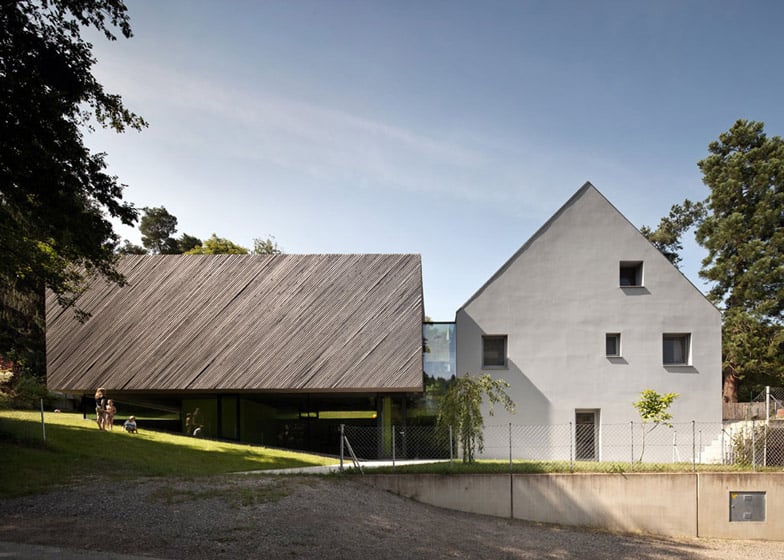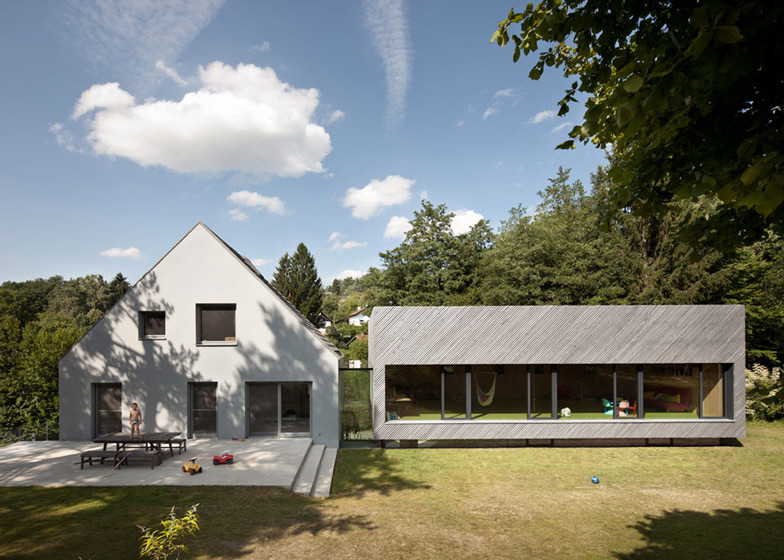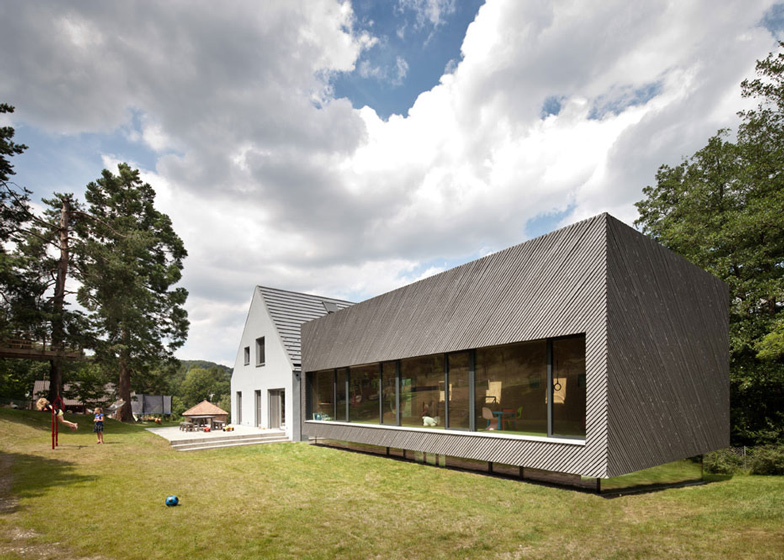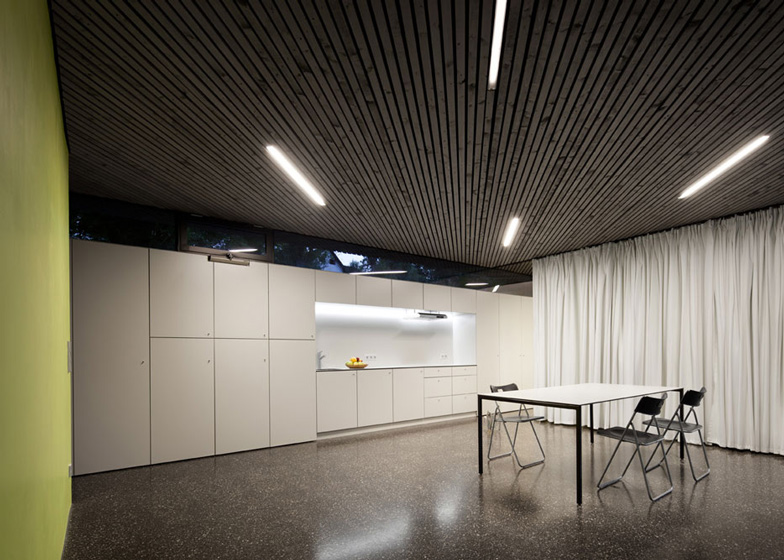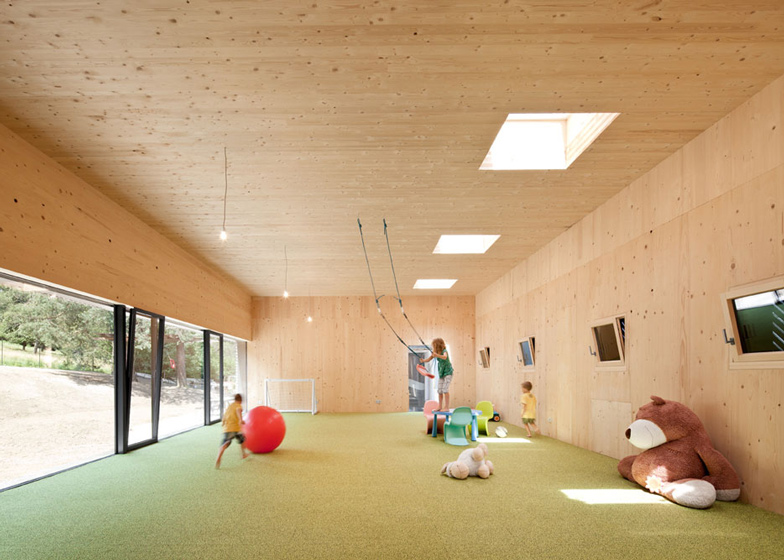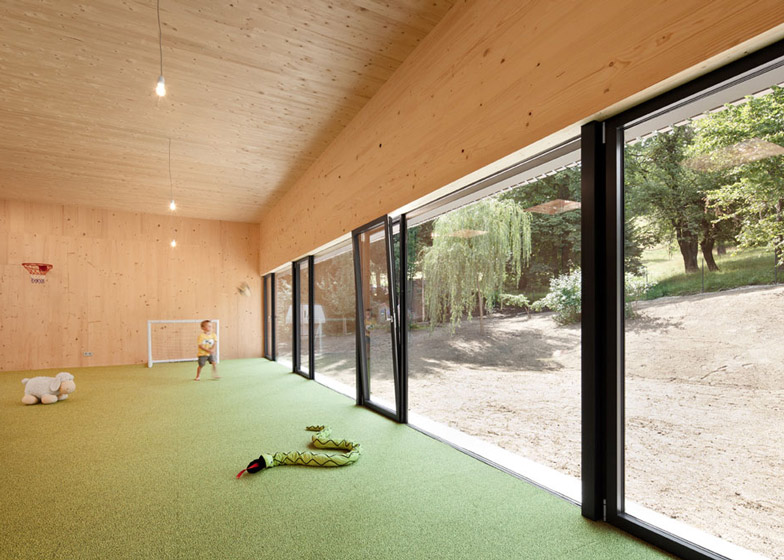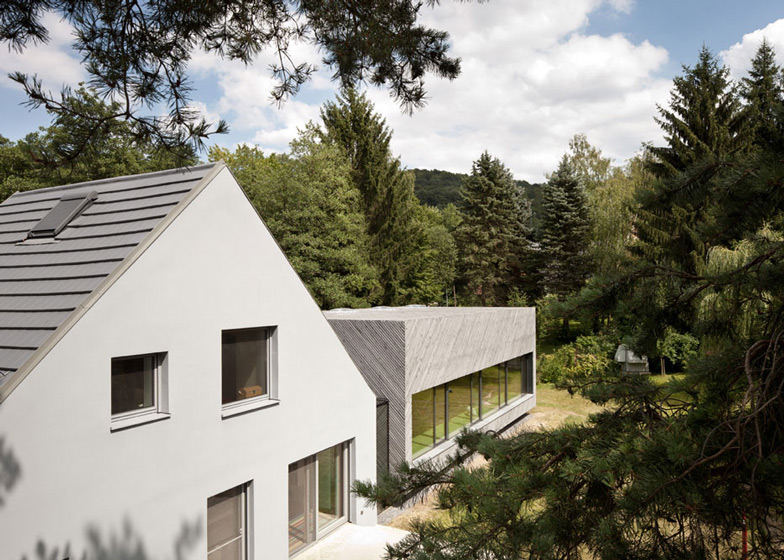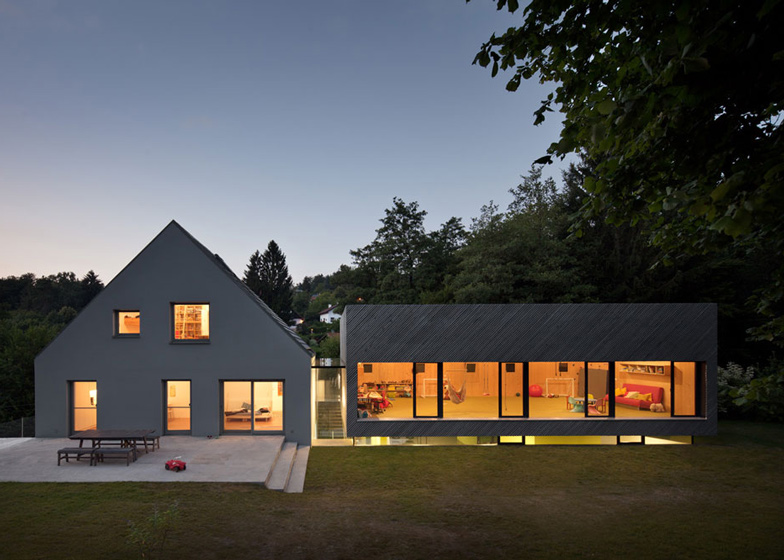Diagonal strips of wood clad the exterior of this annexe that Austrian studio Franz Architekten has added to a house in the suburbs of Vienna to make room for extra family members (+ slideshow).
Vienna-based Franz Architekten designed the extension for an 80-year-old family home in Wienerwald and covered it with grey larch boards, contrasting with the white rendered facade of the existing house.
Connected to the main building via a glazed corridor, the boxy two-storey extension provides more space to accommodate the children and grandparents of the family.
The partially submerged lower level provides a home for the grandmother, but could be converted for other uses in the future, while the upper level is used as a playroom for the children and could be subdivided to create four smaller rooms.
"The shape is caused by the desire to create four equivalent rooms, which specified the dimensions of the house," architect Erwin Stättner told Dezeen.
A rectangular section appears to have been cut from the facade to allow for sliding doors and windows at the front of the playroom.
This room is lined with spruce panels and features a child's swing suspended from the ceiling.
The level below has an open-plan layout, with kitchen worktops and cupboards running along the far wall, while a yellow-painted bathroom creates a box in the centre of the space and separates the living area from the bedroom beyond.
Clerestory windows bring extra light into the space from above, while the playroom overhead features a row of square skylights.
Photography is by Kurt Kuball.
Here's a project description from Heimspiel:
Small steps
After, the young family were taken by the idea of a single-family house in the countryside. In the Wienerwald they found a little house in need of rehabilitation with a large garden. Prospective possibilities of enlargement were already investigated before buying the property. The lean budget required a high portion of own steps in renovating the old building and undertake thermal sanitation. Upon completion of sanitation, the second child had already been born, and thoughts regarding an annexe became more concrete. Also, the grandmother was taken into consideration.
Building regulations left little leeway regarding building density and height. In order to accommodate the entire spatial programme, developing a two-storey structure was mandatory. Illumination of the partly subterranean granny unit in the basement is guaranteed by a strip of windows adapted to the site characteristics.
A free-standing sanitary core divides the open space into sleeping and living areas. The possibility of later converting the granny unit into a small doctor’s practice was taken into consideration during planning.
Instead of the former treehouse, a wooden box floats above the ground floor which in the first development phase is intensively used by meanwhile three children as a large, 3.5m high playroom including a climbing wall, swing and a football goal. All installations have already been prepared for later partitionment into up to four separate rooms.
The basement including the cantilevered ceiling was done in site-mixed concrete. The wooden box was constructed with solid wood tiles and wainscoted on all sides including roof and soffit with diagonally running larchwood latches. Due to the complex geometry with its double mitre cut the grey-glazed latches were mounted by the staff of the architectural practice and the principal themselves. The wooden latches are a dominant design element not only outside, but also as a ceiling lining in the granny unit and wall panelling in the glass joint between the existing building and the new construction.
Instead of the former gas calorific value heating, the whole building is now supplied with warm water and heating by an air heat pump. Apart from the high thermal standard, the long-term flexible and adaptable building makes a distinct contribution to sustainability.
In times of a rising number of single-person households,high divorce rates and single-parent families, this project is an example of how three generations can live together in one building in contemporary architecture. This is aided by different room atmospheres on various levels of old and new building parts in order to fulfil the changing requirements of common areas and possibilities of retreat. The last extension for the time being was the realisation of a large treehouse with a rabbit hutch.
Function: single family house
Actions: reconstruction and obstruction
Location: Eichgraben, Austria
Client/building owner: Dr. Christina Mayr
Start of planning: May 2011
Start of construction: November 2011
Completion: July 2012
Plot size: 1.220m2
Built up area: 178 m2
NFA inventory: 165 m2
NFA enlargement: 185m2
NFA total: 350 m2
Needs of thermal heat: before 321 kWh/m2.a, after 47 kWh/m2.a
Costs, construction: 305.000 €
Costs, usable area, net: 1.650 € m2
Inventory: brick walls
Enlargement: low-energy house
Mechanical services: air-heat pump

